Getting a great workout in is awesome. Strength training sessions can bring on a serious pump and intense cardio sessions can leave you feeling exhausted but still kicking with that infamous runner’s high.
The work put in during the workout won’t mean anything if you don’t recover properly. After all, you don’t gain muscle or get more fit by training. That is meant to break you down so you can recover and be a stronger, more fit individual as your body prepares for its next battle. So, making sure you have the best recovery after workout sessions is imperative to long-term success.
Post Workout Recovery Options
There are tongs of post-workout recovery tools, tips, and tricks found online. The funny thing is that most of them aren’t as beneficial as they seem. Here are a few of the best recovery techniques after a workout:
- Light cardio
- Stretching & mobility work
- Protein supplementation
Light cardio training after a workout session serves as an effective cooldown. But it isn’t just to get your heart rate down. This light aerobic training serves to pump fresh blood around the body to remove metabolites present from the intense training session. Removing these compounds from the bloodstream after a workout can reduce soreness. Focusing on nasal breathing during this cardio work will also activate the parasympathetic nervous system, which works towards recovery. Personally I love doing some low-impact Stand-up Paddle Boarding as a light exercise.

Stretching and mobility work after a workout session will remove any kinks or cramps lingering from a tough workout. While static stretching has lost its favor in the strength training world, dynamic stretching, mobility drills, and even tools like foam rollers and massage guns have their place in improve post-workout recovery.
Taking a fast-acting protein supplement, like Whey Protein or a simple mix of essential amino acids, will help boost the repair and recovery of muscle tissue quicker than whole foods. They serve as a kickstart to the recovery process.
Notice there is a lack of many of the popular recovery methods people like to use:
- Ice baths
- NSAIDs and Tart Cherry extract
- Contrast showers
- Heat therapy
Let’s discuss why these aren’t great recovery tools right after a workout (and when they are suitable).
Things To Avoid
Chronic inflammation is a bad thing and can lead to all kinds of health issues, including increased risk for major disease. But, the inflammation after a workout isn’t that type. So, people mistakenly want to remove this source of inflammation in the name of health.
However, this is only limiting their results. Exercise is a hormetic stressor, initially causing inflammation and damage, only for the body to build itself back stronger and more fit for the next bout of testing physical activity.
So, you don’t want to stop the inflammatory response after a workout because you can be leaving fitness gains on the table if you do so.

This means all of the things used post-workout that people typically use when they are injured (cold and heat therapies, OTC medicine, etc) isn’t a good way to recover right after a workout.
You can use these recovery modalities if you wait at least 24 hours after your workout since this window serves the bulk of your recovery. Most beneficial inflammation has passed and getting rid of the lingering soreness and stiffness can be done through anti-inflammatory tactics, whether they be environmental or supplemental.
Don’t go jump in the hot tub or ice bath after a workout if you are looking to maximize your fitness levels and achieve a better physique. The reduction in soreness isn’t worth the reduction in results.
Two Factors That Determine Recovery Overall
With all this talk about the best recovery after workout sessions, we have to note that two factors are more important than any bout of stretching or supplementation:
- Nutrition
- Sleep
If you don’t have your nutrition on point, your recovery will suffer. If you aren’t getting adequate sleep due to a lack of quantity, quality, or both, your recovery will suffer. There is a great range of tips to get more sleep!
Your diet is easy enough to adjust. Get enough protein and use carbohydrates to fill glycogen stores after workouts. Eating enough calories isn’t always an option, like when you are trying to lose weight, so ensuring you get enough protein and ample amounts of your required micronutrients is the best action to take.
Adjusting your lifestyle to make high-quality sleep a primary focus may take more work. But, until you have a solid sleep routine down, the best post-workout recovery tactics won’t help much. Worrying about post-workout recovery techniques while only getting 5 hours of sleep per night is like stepping over a $100 bill to pick up a quarter…

Sometimes people like to be “hardcore” and wake up at 4-5 AM just to get in an hour of cardio. That cardio won’t make up for the hormonal disruption caused by the lack of sleep. In reality, people that do this are just hurting their recovery chances. Don’t be that guy!
Also, your routine before going to bed is just as important as when you wake up. Turn off all screens and sources of blue light, as they can inhibit melatonin production that tells your body to go to sleep. Ideally, you cut out blue light 2 hours before bed. If you can’t wear blue light blocking glasses and cover your skin from the light as well, since there are receptors on your skin along with your eyes.
Make sure your room is dark and cool. This helps boost sleep quality.
Using these simple tricks, you can improve your diet and sleep quality enough to have a large impact on recovery!
Gains Aren’t Made In The Gym!
Dial-in your training and ensure you aren’t doing too much. Then, try some of the tactics listed in this article immediately after a workout. 24 hours later you can tackle the lingering inflammation if you’d like. Make diet and sleep a priority if you value your recovery. It’s as simple as that. Don’t get lost in the web of recovery methods. It’s not rocket science!
